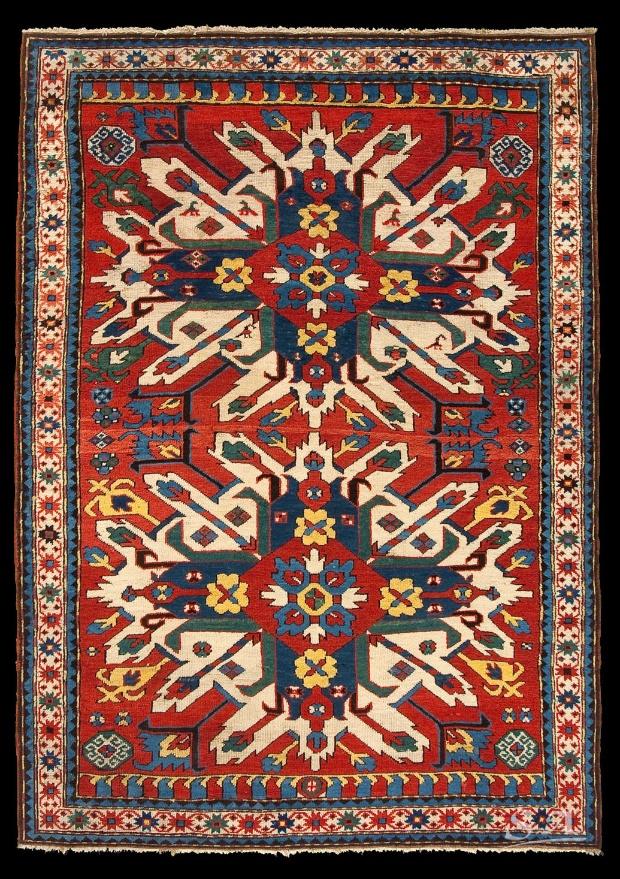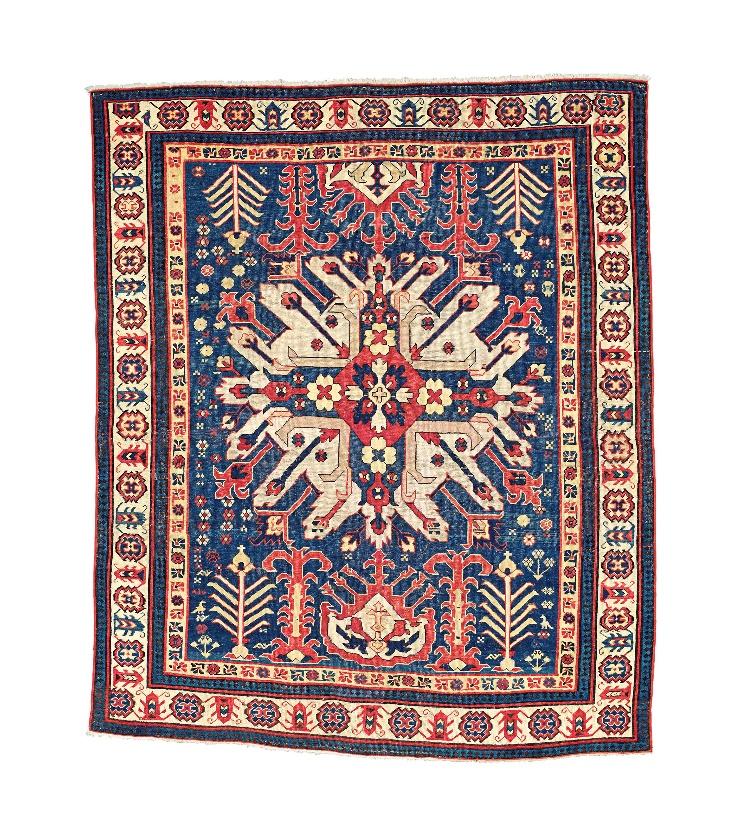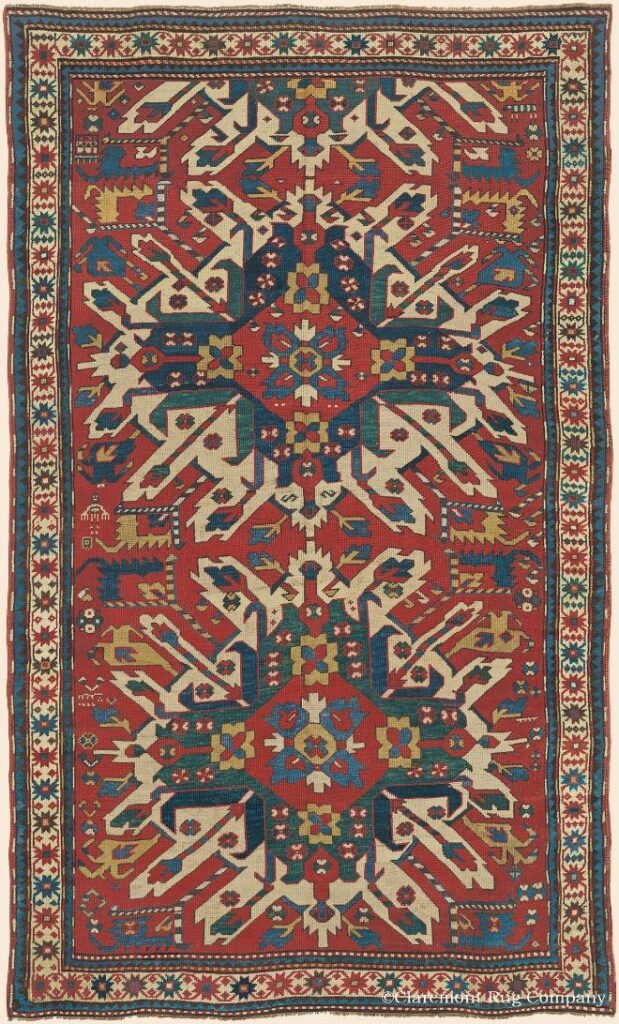Jraberd Rugs

Jraberd, Chilabord, Çiləbörd, Çiləbürt, Chelabi, Chilaberd and Chelaberd are all possible spells for a village de jure in Karabagh (Artsakh in Armenian). One of the most celebrated Caucasian designs was named “Chelaberd” after this village. Jraberd is supposed to be the first known source for the famous design.
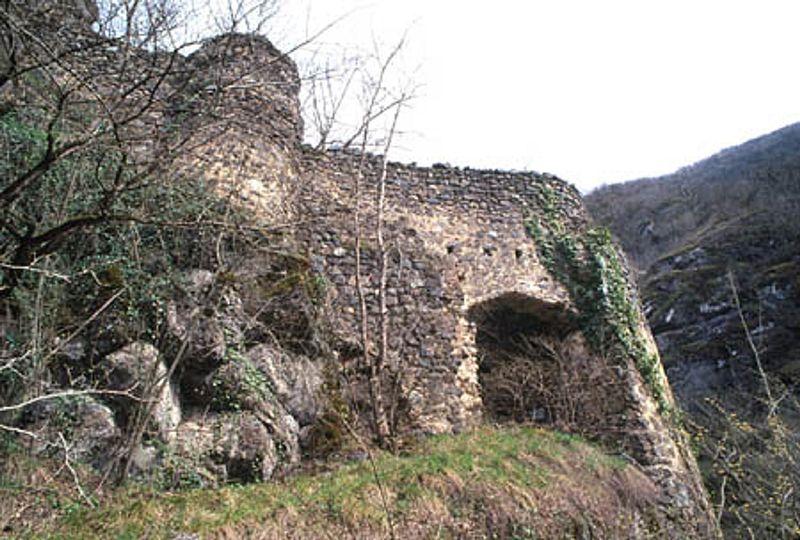
There are seventeenth-century Caucasian carpets with the design. Categorized under the term Kazak, Chelaberd rugs are also called Eagle Kazak, Sunburst Kazak and Adler Kazak. The medallion used is believed to be a schematic representation of a double headed eagle with outstretched wings and claws.
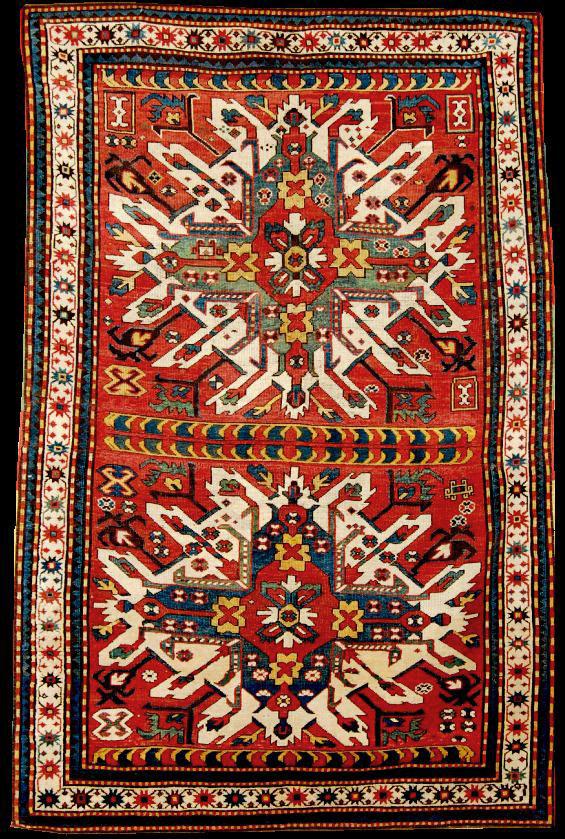
Technical aspects and the structure of Jraberd Rugs

Their average knot density is about 60 symmetric knots per square inch and the average rug area is about 35 square feet. They have an all-wool foundation. Knots are symmetrical (Turkic) with an average density of 60 per square inch, which is coarser than a typical Caucasian piece. Rugs and runners are common. Rare small sizes, such as squares are also found.
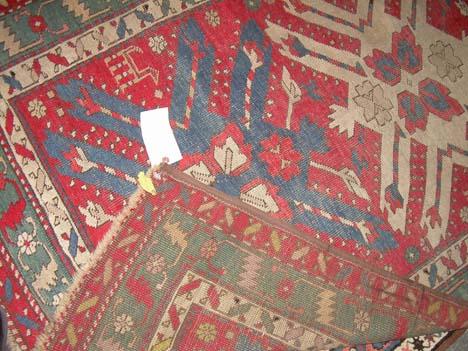
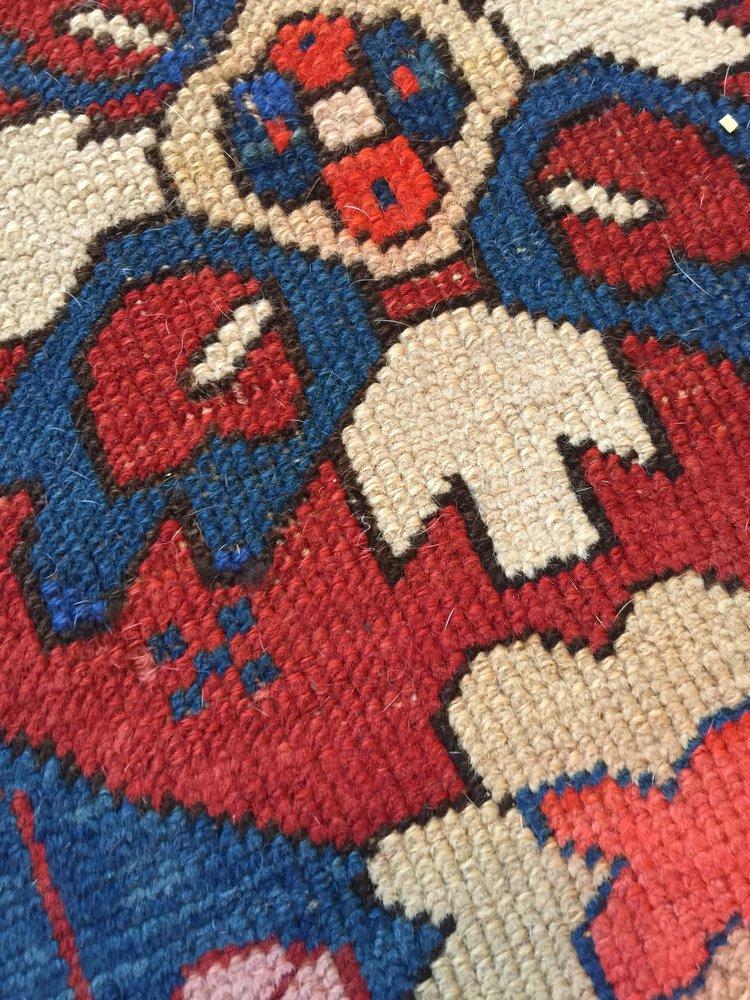
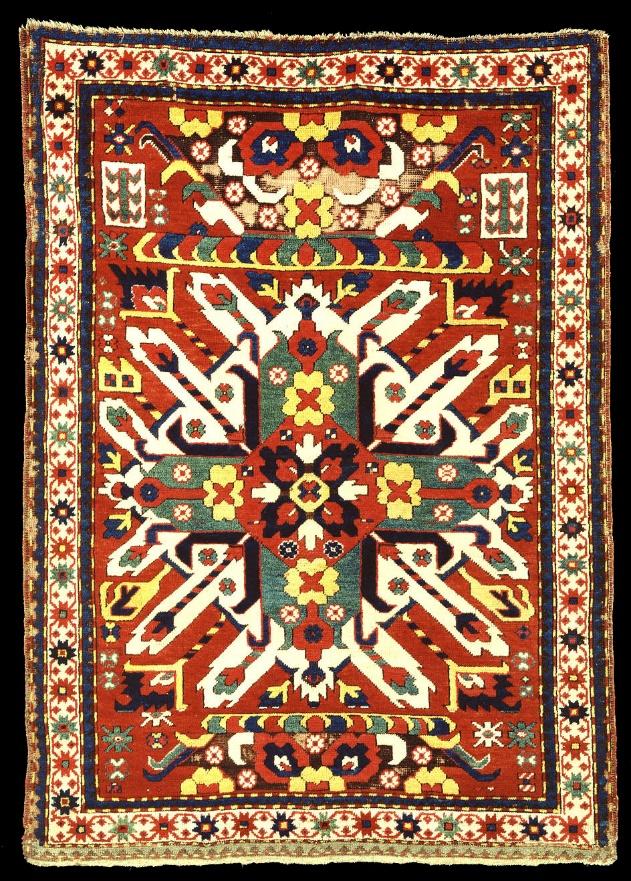
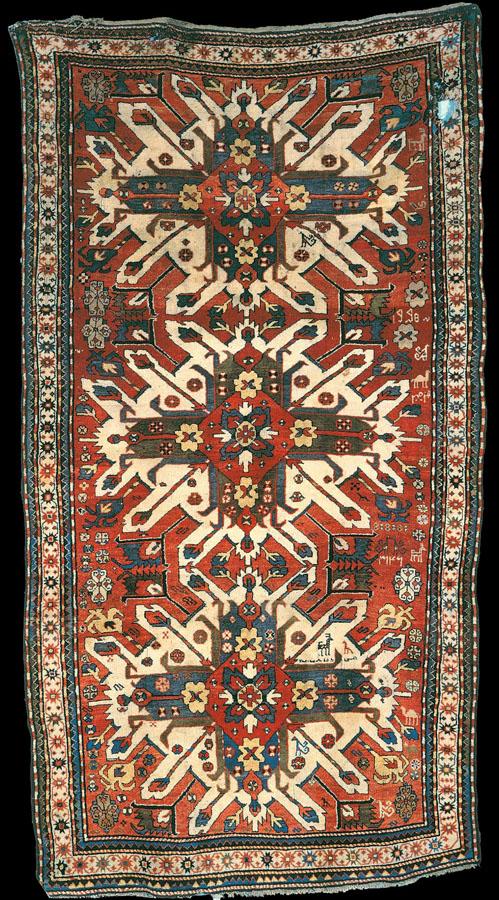
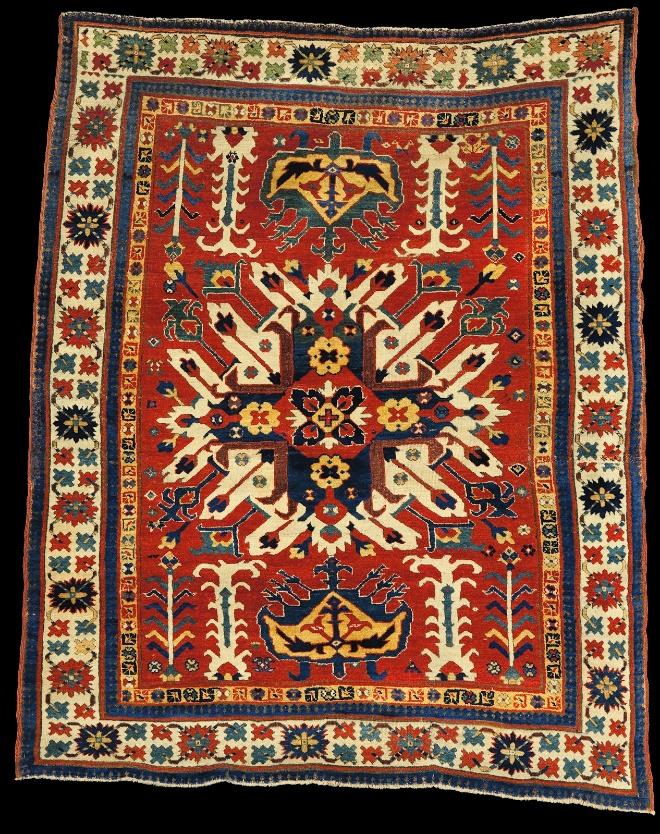
Dyeing and painting of Jraberd rugs
Camel, indigo and rosy are the main colors used. The latter is a deep rosy obtained from madder’s root. Cochineal, too, used in many examples. The red obtained from cochineal called Qirmiz (Kermez) which means ‘insect-like’ in Persian. White (or ivory) has a major role as a simple background for the intricate medallion.
Secondary palette consisted of golden camel, yellow and saffron; olive, grass and jade; crimson, vermillion, purple and pink; and blues: from light indigo to azure. Ivory and black used are usually undyed wool.
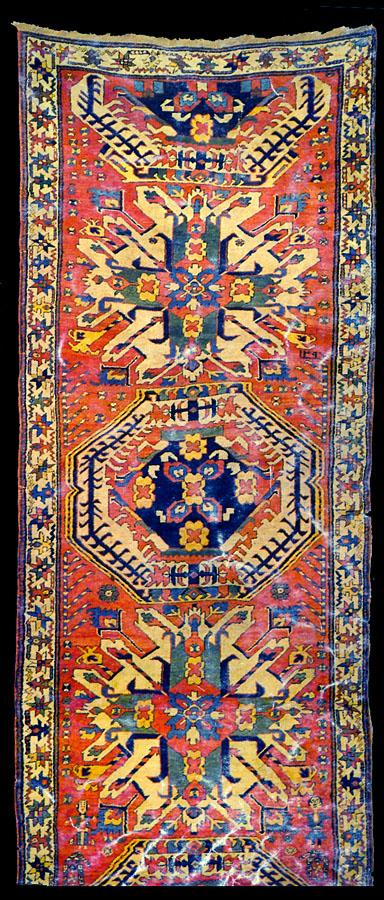
Designs and patterns of the Jraberd rugs
The design named after Jraberd is made of a medallion consisting of a lozenge with parallel radiating arms. Hooked brackets, facing outwards, are above and below the medallion. It is believed to be a schematic representation of a double headed eagle with outstretched wings and claws. Some suggest Dragon carpets as the source of inspiration.
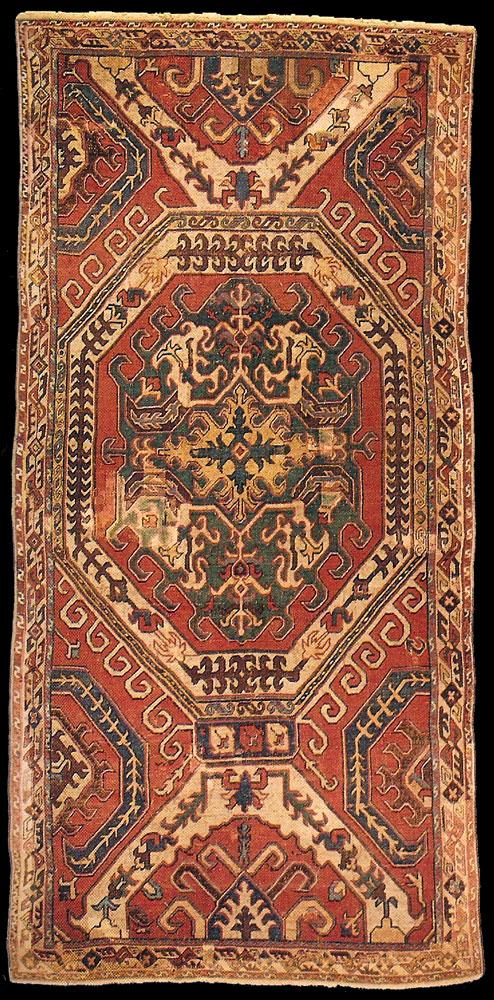
The medallion may be used as central medallion or in pair in double-medallioned designs. Runners may be designed with a triple structure of the medallion.
